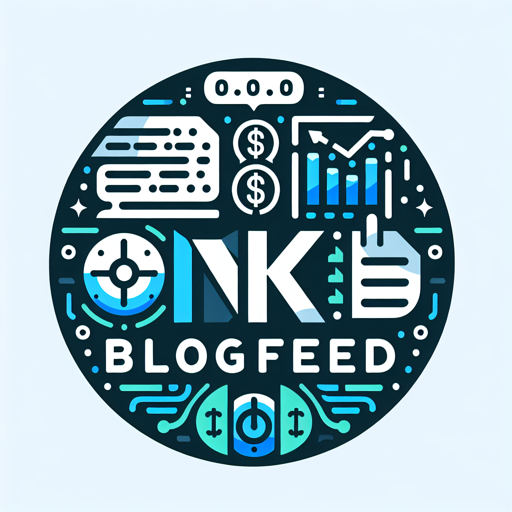“Friday sees more smiles than any other day of the workweek!” — Kate Summers
Author: ONK Blogfeed
-
27 March 2025
“The unexamined life is not worth living.” – Socrates.
-

The Power of Positive Thinking: How to Harness Motivation for Success
The Power of Positive Thinking: How to Use Motivation for Achievement Positive thinking is a cognitive strategy that has the potential to profoundly impact a person’s life path. It is not merely a catchphrase. Fundamentally, positive thinking is keeping a positive attitude, seeing the positive aspects of circumstances, and having faith in one’s capacity to overcome obstacles. This kind of thinking can result in increased creativity, better problem-solving abilities, and increased resilience to hardship. People can cultivate a mindset that supports success and growth by adopting a positive outlook. Also, the benefits of positive thinking go beyond one’s own success.
Key Takeaways
- Positive thinking can be harnessed to increase motivation and achieve success in various aspects of life.
- Understanding the science behind positive thinking and motivation can help in cultivating a positive mindset.
- Techniques such as visualization, affirmations, and gratitude can be used to cultivate a positive mindset.
- Overcoming challenges with positive thinking involves reframing negative thoughts and focusing on solutions.
- Incorporating positive thinking into daily life can have a significant impact on mental health and overall well-being.
It can also improve community support and interpersonal relationships. Positivity increases the likelihood that people will motivate and inspire others around them, which encourages group motivation & achievement. This interdependence emphasizes how crucial it is to foster positivity for the good of others as well as for oneself.
According to studies, people who have an optimistic mindset are more likely to set and accomplish loftier goals. This phenomenon can be explained by the way that thinking positively affects the chemistry of the brain. Neurotransmitters like dopamine and serotonin are released by people’s brains when they think positively, improving motivation and mood. Also, comprehending the connection between motivation & positive thinking requires an understanding of the concept of self-efficacy, which was first proposed by psychologist Albert Bandura. Self-efficacy is the conviction that one can succeed in particular circumstances.
A strong sense of self-efficacy, which in turn motivates people to pursue their goals, is more likely to develop in those who maintain a positive outlook. This motivational and upbeat cycle produces a potent catalyst for both career & personal achievement. Practice and deliberate effort are necessary to develop a positive outlook. Practicing gratitude is one useful strategy.
Focus can be shifted from negative to positive experiences by having people write down their blessings on a regular basis in a gratitude journal. This small gesture promotes a more positive outlook by helping people see the positive aspects of their lives. An additional effective method is visualization. By visualizing oneself accomplishing objectives or conquering challenges, people can construct a mental blueprint for success.
By reaffirming that success is achievable, this practice not only increases motivation but also readies the mind for obstacles in real life. A positive outlook can also be strengthened by surrounding oneself with positive influences, such as encouraging books, mentors, or motivational podcasts. Life will inevitably involve challenges, but how one handles them can have a significant impact. People who think positively are better able to handle challenges.For example, people with a positive outlook are more likely to see setbacks as chances for personal development rather than insurmountable barriers. With this viewpoint, they are able to adjust and come up with solutions instead of giving up. Positive thinking is essential for developing resilience, which is a critical component of conquering obstacles.
When faced with hardship, resilient people are more likely to remain calm & recover from it faster. They can turn obstacles into opportunities for success by keeping an optimistic outlook and concentrating on possible solutions. Achieving success in a variety of spheres of life, such as one’s career, relationships, and personal growth, requires utilizing the power of positive thinking. Employees with a positive outlook at work are frequently more creative and productive.
They are more likely to foster a positive work atmosphere and work well with others, which can increase a team’s or organization’s overall success. In the context of personal growth, optimistic thinking can act as a motivator for goal-setting & accomplishment. People who have confidence in their abilities and a positive attitude are more likely to take chances & seize opportunities that fit with their goals.
In addition to improving personal fulfillment, this proactive strategy opens the door for long-term success. The advantages of positive thinking go far beyond wellbeing and mental health. Positive thinking has been associated in numerous studies with reduced stress, anxiety, and depression levels. When faced with obstacles in life, people who are optimistic typically have better coping mechanisms, which enhances their emotional resilience. A more balanced emotional state and increased life satisfaction can be the outcome of this improved resilience. Positive thinking can also have an impact on one’s physical health.
Those who have a positive outlook may live longer, have better immune systems, & have lower blood pressure, according to research. Maintaining a positive outlook is crucial for both mental and physical health, as the mind-body connection emphasizes. It is possible to incorporate positive thinking into daily life with minor changes that have a big impact. Positive affirmations are a useful way to start each day. Every morning, people can create a positive tone for the day by repeating positive statements about themselves or their objectives. Mindfulness meditation is an additional useful tactic.
This method fosters an attitude of acceptance and positivity while encouraging people to concentrate on the here and now. People can teach their minds to react more constructively to stressors & difficulties by practicing mindfulness on a regular basis. Limiting exposure to harmful influences is also advantageous, whether they originate from news sources, social media, or toxic relationships. Having a positive outlook and improving general well-being can be achieved by surrounding oneself with positive people, whether through encouraging content or helpful communities.
To sum up, the influence of positive thinking is immense & complex. People can use it to improve their mental health & general quality of life while gaining motivation for success by comprehending its tenets, adopting its methods, and putting them into practice in their daily lives.
-

The Power of Positive Thinking: 5 Ways to Boost Your Motivation
The Strength of Positive Thinking: 5 Strategies to Increase Your Motivation Positive thinking is a powerful psychological tool that can greatly increase motivation. It is not just a catchphrase. People are more likely to approach difficulties with zeal and resiliency when they have a positive outlook.
Key Takeaways
- Positive thinking can significantly boost motivation and drive towards achieving goals.
- Cultivating a positive mindset is essential for increasing motivation and overcoming obstacles.
- Affirmations and visualization can be powerful tools for harnessing the power of positive thinking.
- Surrounding yourself with positive influences can have a significant impact on your motivation levels.
- Understanding the science behind positive thinking and motivation can help in setting and achieving goals effectively.
A willingness to take chances, more creativity, & more vitality can result from this change in viewpoint. According to research, people who have a positive outlook are more likely to set and stick to higher goals because they have faith in their own abilities. Also, a feedback loop that strengthens motivation can be produced by positive thinking. People become more confident and motivated to strive for greater accomplishments when they achieve success, no matter how minor.
In addition to boosting individual motivation, this positive feedback loop has a positive impact on others, fostering an atmosphere that fosters group motivation. It is essential for anyone who wants to use positive thinking in their personal or professional life to comprehend this dynamic. Practice and deliberate effort are necessary to develop a positive outlook.
Daily exercises in gratitude, in which participants consider their blessings, are one successful strategy. This exercise cultivates an optimistic mindset by diverting attention from unpleasant experiences to the good things in life. People can also challenge negative beliefs and replace them with positive ones by practicing mindfulness techniques like meditation, which increase awareness of one’s thoughts and feelings. Seeing obstacles as chances for improvement is another tactic for cultivating an optimistic outlook.
People can reinterpret setbacks as instructive experiences that advance their personal growth rather than seeing them as accomplishments. This change in viewpoint not only increases resilience but also motivation, allowing people to overcome setbacks with newfound vigor and resolve. Strong techniques that can enhance the motivational benefits of positive thinking include visualization and affirmations. People repeat positive statements to themselves, known as affirmations, to strengthen their goals and self-belief.
For example, stating “I am capable of achieving my goals” can boost motivation and self-assurance. Affirmations have the power to change how people see themselves and motivate proactive behavior when they are used regularly. By enabling people to visualize their success, visualization enhances affirmations. Their actions are guided by a mental blueprint they create by vividly visualizing themselves accomplishing their goals. For instance, an athlete may picture themselves winning a race, which can improve their performance by increasing their concentration and self-assurance.When combined, these strategies produce a potent synergy that increases motivation and helps people move closer to their goals. Attitudes and motivation levels are greatly influenced by the company one keeps. An atmosphere that is supportive and growth-oriented can be created by surrounding oneself with positive influences, whether they be friends, family, or coworkers. People who are positive have a tendency to encourage others around them, offering assistance when things get tough and sharing in victories. This positive social reinforcement can be a strong motivator.
On the other hand, unfavorable influences can breed doubt and sap motivation. Finding connections that inspire and energize is crucial, as is identifying toxic relationships that could impede personal development. Joining communities of support or interacting with mentors can offer extra accountability and motivation, fostering a network that inspires people to pursue their objectives. Any path to success is bound to include obstacles, but overcoming these difficulties can be greatly impacted by keeping a positive outlook.
Instead of approaching problems with hopelessness, people with a positive mindset can be creative and resourceful. When confronted with a setback at work, for example, a positive-minded employee might come up with different ideas instead of giving in to frustration. Also, resilience is promoted by considering challenges as transient roadblocks rather than insurmountable barriers.
This viewpoint inspires people to persevere in the face of difficulty, which eventually results in greater accomplishments. People who approach challenges with optimism not only become more motivated, but they also acquire useful problem-solving abilities that benefit them in all facets of their lives. Goal-setting is an essential component of both professional and personal growth, and it can be greatly aided by positive thinking.
Those who approach goal-setting with optimism are more likely to create challenging but doable goals. They are inspired to imagine the actions required to accomplish these objectives while retaining faith in their own abilities when they have a positive outlook. Also, despite setbacks or distractions, positive thinking aids people in staying committed to their objectives. When they affirm their commitment and visualize success, they can stay motivated even in the face of difficulties. Along the path to success, this proactive approach not only raises the possibility of reaching objectives but also improves general fulfillment and satisfaction.
There is evidence from numerous scientific studies in psychology and neuroscience that positive thinking and motivation are related. Positive emotions can improve cognitive flexibility, enabling people to think more creatively and adaptably in the face of adversity, according to research. Both creativity and problem-solving, which are vital elements of long-term motivation, depend on this cognitive flexibility.
According to studies, thinking positively can also have physiological advantages like lowering stress & boosting immunity. These health advantages boost motivation even more by improving general wellbeing and energy levels. Understanding the scientific foundations of positive thinking helps people recognize its transformational potential and actively apply it to their everyday lives for long-term success and motivation.
-
26 March 2025
“Life is what happens when you’re busy making other plans.” – John Lennon
-
25 March 2025
“Success is often the result of taking a misstep in the right direction.” – Al Bernstein
-
24 March 2025
“Success is not the key to happiness. Happiness is the key to success. If you love what you are doing, you will be successful.” – Albert Schweitzer
-

How to Achieve a Successful Digital Detox: Tips and Strategies
How to Achieve a Successful Digital Detox: Tips and Strategies
In our modern digital world, the constant buzz of notifications and the allure of endless scrolling can easily consume our daily lives. The concept of a digital detox has emerged as a powerful tool to help individuals regain control over their technology use, enhance their productivity, and improve their overall wellbeing. By consciously disconnecting from electronic devices, we can create a more balanced relationship with technology and improve our mental and physical health.
What is a Digital Detox and Why is it Important?
Understanding the Concept of Digital Detox
A digital detox refers to a period during which individuals intentionally reduce or eliminate their use of digital devices such as smartphones, tablets, and computers. This detox isn’t about completely abandoning technology, but rather about taking a break from digital habits that may negatively impact our lives. By disconnecting from the digital world, people can focus on being present in their surroundings, reconnect with themselves, and nurture their social connections. It’s a way to reset one’s relationship with technology and foster digital wellness.
Benefits of a Successful Digital Detox
One of the key benefits of a successful digital detox is the improvement in mental and physical health. Reducing screen time helps improve sleep quality, reduce stress, and enhance focus and productivity. By unplugging from digital distractions, individuals can experience a heightened sense of alertness and mindfulness, allowing them to recharge and engage more deeply with the present moment. Furthermore, a digital detox can help in establishing healthier boundaries with technology, leading to a more balanced and fulfilling lifestyle.
The Impact of Screen Time on Wellbeing
Excessive screen time has been linked to various negative outcomes, including poor sleep quality, increased stress levels, and diminished productivity. Continuous exposure to digital devices can lead to digital fatigue, where individuals feel overwhelmed and disconnected from real-life experiences. By understanding the impact of screen time on wellbeing, individuals can make informed decisions to reduce their technology use and promote their digital well-being. Taking a break from screens allows for personal reflection and promotes healthier digital habits.
How Can You Plan a Successful Digital Detox?
Strategies for a Successful Digital Detox
Planning a successful digital detox requires thoughtful strategies and a commitment to change. Start by identifying the digital habits that you wish to modify, such as the constant urge to check notifications or excessive social media use. Set clear goals for your detox period, such as reducing smartphone usage during work hours or designating tech-free times in your day. By creating a structured plan, you can ensure a more effective and rewarding digital detox experience.
Setting Realistic Goals and Boundaries
Setting realistic goals and boundaries is crucial for a successful digital detox. Begin by assessing your current technology use and identifying areas that require change. Establish specific, achievable goals, such as limiting screen time to a certain number of hours per day or avoiding electronic devices an hour before bedtime. By creating boundaries, you can cultivate a healthier relationship with technology and prevent digital distractions from hindering your productivity and wellbeing.
Choosing the Right Time for Your Detox
Timing plays a significant role in the success of a digital detox. Choose a period where you can fully commit to reducing your screen time without the pressure of impending deadlines or work commitments. Weekends, holidays, or vacation times can be ideal for taking a digital detox, as they offer opportunities to engage in offline activities and strengthen social connections. By selecting the right time, you can maximize the benefits of your digital detox and create lasting positive changes in your life.
What Are the Best Strategies to Unplug from Digital Devices?
Mindfulness Practices to Reduce Screen Time
Incorporating mindfulness practices into your daily routine can significantly reduce screen time and enhance your digital detox experience. Mindfulness encourages individuals to be fully present and aware of their actions, helping them resist the temptation to mindlessly scroll through digital devices. Techniques such as meditation, deep breathing exercises, and mindful walking can help individuals stay grounded and focused, reducing the reliance on technology for entertainment or distraction.
Creating Tech-Free Zones at Home
Establishing tech-free zones in your home is an effective strategy to promote a successful digital detox. Designate specific areas where digital devices are off-limits, such as the dining room or bedroom, to encourage more meaningful interactions and improve sleep quality. These tech-free zones foster a sense of calm and provide a break from the constant presence of screens, allowing for relaxation and rejuvenation. By creating these sanctuaries, you can enhance your digital well-being and reduce the impact of technology on your daily life.
Using Apps to Monitor and Limit Social Media Use
Ironically, digital tools can be instrumental in achieving a successful digital detox. Various apps are available that monitor and limit social media use, helping individuals become more aware of their digital habits. These apps track screen time, provide usage reports, and offer features to block certain applications during designated periods. By leveraging technology in this way, individuals can gain more control over their digital consumption and work towards a more balanced relationship with their devices.
How Does a Digital Detox Improve Productivity and Wellbeing?
Enhancing Mental Health and Wellbeing through Unplugging
A digital detox can have profound effects on mental health and overall wellbeing. By unplugging from digital devices, individuals can reduce stress, improve sleep quality, and foster a greater sense of mental clarity. The absence of constant notifications and digital distractions allows for deeper relaxation and introspection, contributing to enhanced emotional resilience and mental stability. A successful digital detox provides the opportunity to recharge both the mind and body, leading to improved health and wellbeing.
Boosting Productivity by Reducing Digital Distractions
Digital distractions are a major hindrance to productivity in the modern world. By taking a break from digital devices, individuals can minimize interruptions and focus on important tasks more effectively. A digital detox allows for uninterrupted work periods, leading to increased efficiency and better time management. By reducing the constant pull of technology, individuals can channel their energy into productive endeavors, ultimately achieving more in less time and enhancing their professional and personal lives.
Recharging Your Mind and Body Away from Screens
Taking a break from screens can be incredibly rejuvenating for both the mind and body. A digital detox offers the chance to engage in physical activities, explore nature, and connect with loved ones, all of which contribute to improved physical health and social wellbeing. By stepping away from digital devices, individuals can recharge their energy, enhance their mood, and cultivate a greater appreciation for the world beyond screens. This holistic approach to wellbeing ensures a more balanced and fulfilling lifestyle.
What Challenges Might You Face During a Digital Detox?
Dealing with Withdrawal Symptoms from Social Media
During a digital detox, individuals may experience withdrawal symptoms from social media, such as anxiety or a fear of missing out. These feelings are normal and often temporary, as the mind adjusts to a new routine without constant digital engagement. By acknowledging these symptoms and employing strategies like mindfulness and deep breathing, individuals can navigate these challenges and remain committed to their detox goals. Over time, the reduced reliance on social media fosters a healthier mental state and improved wellbeing.
Overcoming the Urge to Check Notifications
The urge to check notifications can be one of the most challenging aspects of a digital detox. To overcome this, individuals should start by turning off non-essential notifications and creating specific times to check their devices. Engaging in offline activities and hobbies can also help distract from the compulsion to constantly reach for digital devices. By gradually reducing the frequency of checking notifications, individuals can break free from the cycle of digital dependency and regain control over their time and attention.
Maintaining a Balanced Approach Post-Detox
After completing a digital detox, maintaining a balanced approach to technology use is crucial for long-term success. Reflect on the insights gained during the detox period and consider implementing permanent changes to digital habits. Establish ongoing boundaries, such as regular tech-free periods or designated device-free days, to ensure that the benefits of the detox are sustained. By integrating these practices into everyday life, individuals can foster a healthier relationship with technology and enjoy lasting improvements in productivity and wellbeing.
-

How to Overcome Decision Fatigue and Reclaim Your Mental Clarity
In today’s fast-paced world, individuals are often bombarded with choices that demand their attention, leading to a phenomenon known as decision fatigue. This state of mental exhaustion can significantly impact one’s ability to make effective decisions throughout the day. The good news is that by understanding how decision fatigue affects us and learning strategies to combat it, we can reclaim our mental clarity and improve our overall well-being.What is Decision Fatigue and How Does It Affect You?
Understanding the Concept of Decision Fatigue
Decision fatigue is a psychological phenomenon that occurs when an individual is faced with making too many decisions over a period of time, leading to a decline in their ability to make sound choices. This mental fatigue results from the depletion of mental energy required to weigh options, consider outcomes, and finalize a choice. When we experience decision fatigue, even the most straightforward decisions seem daunting, and our capacity to make even the simplest kind of decision is impaired. This condition often leads to impulsive or poorly thought-out decisions, significantly affecting our personal and professional lives.
Common Symptoms of Decision Fatigue
Recognizing the symptoms of decision fatigue is crucial to addressing it effectively. Common signs include feeling overwhelmed by the number of decisions you have to make, experiencing mental fatigue, and finding it challenging to make even easy decisions. Individuals may also notice a tendency towards procrastination or an increase in impulsive choices as their mental reserves dwindle. These symptoms collectively indicate that one’s decision-making faculties are overtaxed, and without intervention, they can lead to more severe emotional fatigue and stress.
The Impact of Decision Fatigue on Your Daily Life
The effects of decision fatigue on daily life can be profound. As decision-making becomes more taxing, individuals may struggle to maintain productivity throughout a long day, often feeling drained and unable to focus on important tasks. This can result in a decreased ability to make better decisions, negatively impacting personal relationships and work performance. Moreover, the accumulated stress from making too many decisions can exacerbate mental fatigue, creating a cycle that is challenging to break without intentional efforts to manage one’s cognitive load.
How Can You Overcome Decision Fatigue?
Ways to Overcome Decision Fatigue Effectively
Overcoming decision fatigue involves implementing strategies that help manage the cognitive burden associated with decision-making. One effective approach is to prioritize decisions, focusing on the most important ones when mental energy is at its peak. Establishing a daily routine can also minimize the effort required to make decisions, as it reduces the number of decisions you make each day. Additionally, setting boundaries and simplifying choices can greatly aid in conserving mental resources, allowing for more deliberate and thoughtful decision-making.
The Role of a Consistent Daily Routine in Battling Fatigue
A consistent daily routine plays a pivotal role in combating decision fatigue by creating a structured environment where many decisions are predetermined. By reducing the number of decisions required each day, individuals can conserve mental energy for more critical tasks. This routine not only simplifies daily life but also provides a sense of stability and predictability, which can alleviate the stress associated with making too many decisions. Furthermore, routines help in forming habits that minimize mental fatigue, allowing individuals to seamlessly navigate their day without feeling overwhelmed.
Benefits of Mindfulness in the Decision-Making Process
Incorporating mindfulness into the decision-making process can significantly alleviate the effects of decision fatigue. Mindfulness encourages individuals to be present and deliberate, helping them to better evaluate options and outcomes without becoming overwhelmed. This practice aids in honing one’s ability to make better decisions by fostering a calm and focused mental state. Engaging in mindfulness exercises regularly can strengthen mental clarity, reduce emotional fatigue, and improve overall cognitive functioning, making it easier to navigate the complexities of daily decision-making challenges.
How to Delegate Decisions to Manage Decision Fatigue
Why It’s Important to Delegate Decisions
Delegating decisions is a crucial strategy for managing decision fatigue, as it allows individuals to distribute the cognitive load associated with making numerous choices. By entrusting others with certain decisions, one can conserve mental energy for more significant or complex decisions that require their direct attention. This delegation not only reduces the burden of decision-making but also encourages a collaborative environment where team members are empowered to contribute and take responsibility. Ultimately, this approach enhances overall efficiency and ensures that critical decisions are made with greater precision and thoughtfulness.
Effective Strategies to Delegate Decisions Successfully
To delegate decisions effectively, it is essential to establish clear guidelines and communicate expectations to those taking on decision-making responsibilities. Providing context and necessary information ensures that delegated decisions align with overall goals and objectives. Additionally, fostering a culture of trust and accountability encourages individuals to feel confident in their roles, leading to more effective delegation. Regular check-ins and feedback sessions can further enhance the delegation process, ensuring that decisions are made efficiently and effectively, ultimately reducing the decision-maker’s cognitive load.
Overcoming the Fear of Letting Go
One of the most significant barriers to delegating decisions is the fear of letting go and relinquishing control. Overcoming this fear requires a shift in mindset, recognizing that delegating can lead to more effective decision-making by allowing others to contribute their expertise and perspectives. Building trust in the capabilities of others is critical, as is understanding that letting go does not mean losing influence but rather optimizing the decision-making process. Embracing delegation as a strategic tool can empower individuals to focus on high-priority tasks that genuinely require their attention, thus alleviating decision fatigue.
How Does a Structured Routine Help in Reducing Decision Fatigue?
Creating a Routine to Simplify Daily Tasks
Creating a structured routine is instrumental in simplifying daily tasks and reducing decision fatigue. By establishing a set schedule, individuals can automate many decisions, freeing up mental resources for more significant challenges. A routine provides a predictable framework that minimizes the number of decisions required each day, allowing individuals to focus on tasks that truly need their attention. This structure also fosters consistency and efficiency, making it easier to maintain productivity and navigate daily responsibilities without feeling overwhelmed by the constant need to make choices.
How to Reduce the Number of Decisions You Make Daily
Reducing the number of decisions you make daily is key to managing decision fatigue. One effective strategy is to prioritize decisions, addressing the most critical ones first and deferring or eliminating less important choices. Streamlining processes and eliminating unnecessary options can further alleviate the decision-making burden. Additionally, adopting habits such as meal planning, setting a fixed wardrobe, and scheduling regular tasks can significantly decrease the cognitive load associated with routine decisions, allowing individuals to conserve mental energy for more important decisions.
Building Habits to Minimize Mental Fatigue
Building habits is a powerful way to minimize mental fatigue and reduce decision fatigue. Habits automate behaviors, reducing the need for conscious decision-making and preserving mental energy for more critical tasks. By cultivating routines that incorporate healthy lifestyle practices, individuals can enhance their ability to make better decisions and maintain mental clarity throughout the day. Establishing habits such as regular exercise, adequate sleep, and mindful eating also contributes to overall well-being, supporting cognitive function and resilience against the demands of daily life.
What Are the Long-term Benefits of Managing Decision Fatigue?
Enhancing Your Ability to Make Better Decisions
Managing decision fatigue offers long-term benefits that enhance one’s ability to make better decisions. By reducing the cognitive load associated with decision-making, individuals can approach choices with greater clarity and focus. This improved decision-making capacity leads to more thoughtful and deliberate outcomes, positively impacting both personal and professional aspects of life. Over time, the skills developed in managing decision fatigue can foster greater confidence and competence in navigating complex situations, ultimately leading to more successful and fulfilling experiences.
Improving Mental Clarity and Reducing Emotional Fatigue
One of the most significant long-term benefits of managing decision fatigue is the improvement in mental clarity and reduction of emotional fatigue. By implementing strategies to streamline decision-making, individuals can maintain a clear and focused mind, better equipped to handle daily challenges. This clarity reduces stress and emotional exhaustion, allowing individuals to approach tasks with renewed energy and enthusiasm. Ultimately, improved mental clarity enhances overall well-being, enabling individuals to enjoy a more balanced and fulfilling life.
Maintaining Productivity Over a Long Day
Effectively managing decision fatigue is crucial for maintaining productivity over a long day. By minimizing the cognitive demands associated with decision-making, individuals can sustain their energy and focus on tasks that require their attention. This sustained productivity not only improves performance but also contributes to a sense of accomplishment and satisfaction. As decision fatigue is managed, individuals find themselves better equipped to tackle the demands of their day, leading to more efficient and successful outcomes in both personal and professional arenas.
-
21 March 2025
“Sometimes the most productive thing you can do is relax.” — Mark Black


